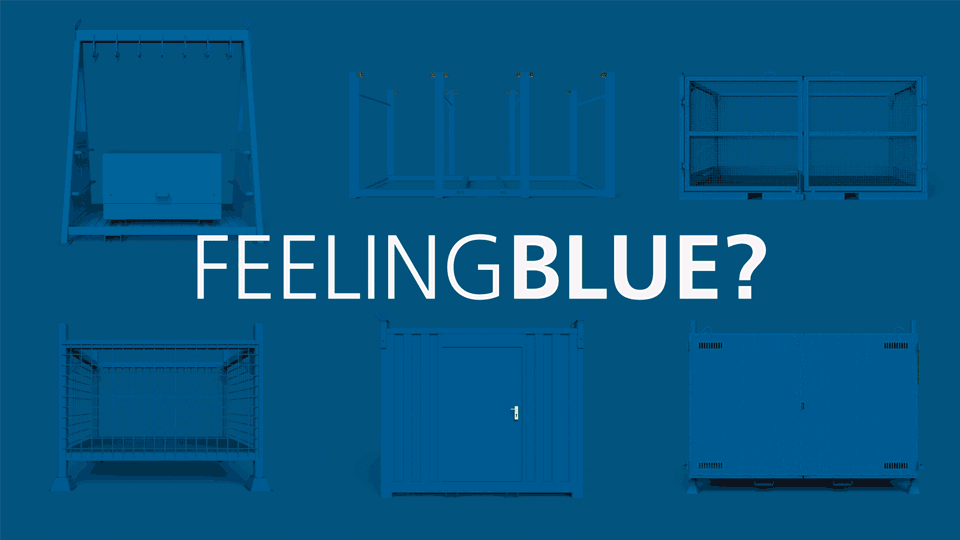Tidy sites increase safety of personnel, improve project efficiency and minimise the impact of construction on local communities. In this blog we explore some best practice solutions to maintain a tidy site and reduce the risk of injury to staff and the general public.
A Tidy Site. Reverie or Reality?
If you are one of the many people who finds keeping a construction site clean and tidy is harder than it sounds; and in often case is just something to dream about, then you are probably glad to know that you are not alone.
Keeping a construction site tidy and organised is one of the most important things to aid safety on site. Over the last year, 137 workers were killed at work. The industry with the highest fatalities was Construction, with 30 workers killed.*
What we need to consider here is that these 30 people may not have necessarily been killed as a result of a messy site; in fact the highest percentage of deaths were actually caused by the worker being trapped by a moving vehicle. Also, the number of fatalities in construction in 2016/17 was the lowest number on record for the sector. However, regardless of the circumstances, these 30 fatalities were 30 too many.
Untidy sites are dangerous.
There is no argument about that.
Even though many of the fatalities we referred to above were not directly related to the condition of the site, this statistic does not take into account life-changing or less serious injuries. According to an article on Planning & Building Control Today, of the 65,000 non-fatal construction accidents reported in 2014 and 2015, 23% of them were due to slips, trips and falls on work sites caused by materials or tools being left in the wrong place.* That’s nearly 15,000 injuries that could have been avoided if the equipment had been tidied up after use.
There are simple methods of keeping sites tidy, it just needs everyone to be aware and take responsibility. According to the Health & Safety at Work Act 1974, it is the employer’s duty to protect the health, safety and welfare of their employees and other people who might be affected by their business. However, it also states that employees have a duty to take care of their own health and safety and that of others who may be affected by their actions at work. They must cooperate with employers and co-workers to help everyone meet their legal requirements. We can conclude from this then that everyone is responsible, no one is exempt.

5 Easy Steps to Improve Site Organisation
Raise Awareness
Ensure that everyone on site knows the dangers of an untidy site and what they are responsible for keeping clean. Encouraging tidiness on site shows that you care about workers’ welfare and sets a good example for the whole team.
Lead by example
All project managers and leaders on a construction site must be properly briefed and trained in all health & safety aspects of a tidy site so they can demonstrate best practice and help instruct others ‘on-the-job’.
Provide the right tools
Don’t forget that clean work area is a safe work area. Ensuring everyone on site has the right equipment to do the job, this will help reduce the amount of equipment that is left lying around.
Apply lean production methods
While maybe considered too abstract for a site, some of the basic principles of ‘kaizen’ or lean management are directly applicable to a construction site. Introducing designated tool and equipment storage areas in strategic places around the site can reduce distances that workers must walk to get the equipment they need and can encourage storage of equipment immediately after to use.
Invest in site storage equipment
While it may seem like an extra investment, purchasing or renting specifically designed storage equipment can ensure that you save money and the site is better organised. For example, ensure that lifting chains and lifting gear are kept safe and secure with inspection notes, meaning it is clear when inspections and testing are required, with a chain storage rack.
There Are No Disadvantages of Tidy Sites.
As well as the safety aspect, which is obviously the most important, there are other major benefits of keeping your construction site clean and tidy. Environmental and community impacts, efficiencies and security are a few.
Keeping a site clean can result in minimising the impact on the local communities and the environment, by less air pollution, less visual pollution, and can prevent from harmful waste being accidently released into the environment, polluting soils and water. Construction sites are bound by strict regulations around what types of waste water can be released into the environment and this can result in significant penalties for the responsible company if found guilty.
One other major advantage of having a tidy site is the impression it leaves. A messy site can give an impression of bad workmanship and disorganisation, but in contrast a well-ordered, neat building site will give an excellent portrayal of your company and the work that you do. This, in turn, could lead to repeat business and word-of-mouth recommendations. And who doesn’t want that?
We Love to Help!
Conquip have helped many companies to increase safety and efficiency on site, while reducing their impact on the environment and local communities.
To increase efficiency we have introduced storage equipment that can be forklifted and crane lifted to reduce moving tools or materials excessively. To increase safety and tidiness we have introduced a wide range of general storage equipment, including chain storage and wide range of COSHH storage solutions.
To help clients reduce their impact on the environment and the local community we have introduced cleaning and dust suppressing equipment such as forklift sweeper attachments, wheel wash and bootwash systems.

References
Health and Safety Executive, Fatal Injuries Arising from accidents at work in Great Britain 2017, HTTP://WWW.HSE.GOV.UK/STATISTICS/PDF/FATALINJURIES.PDF
PBC Today, Health & Safety News, HTTPS://WWW.PBCTODAY.CO.UK/NEWS/HEALTH-SAFETY-NEWS/KEEPING-BUILDING-SITE-CLEAN-IMPROVED-SAFETY-EFFICIENCY/24146






